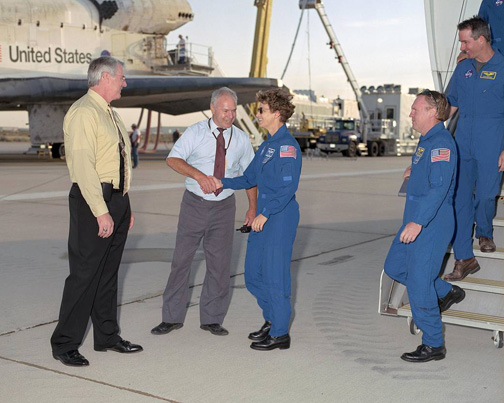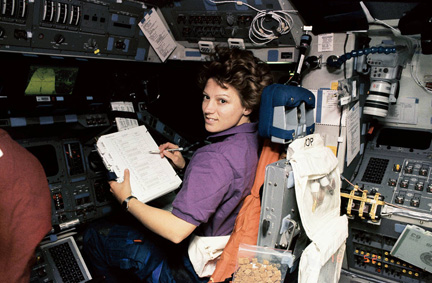
NASA / Photo Jim Ross
By Mary O’KEEFE
On April 3, NASA introduced the world to the Artemis Moon Mission astronauts.
“NASA and the Canadian Space Agency (CSA) announced the four astronauts who will venture around the Moon on Artemis II, the first crewed mission on NASA’s path to establishing a long-term presence at the Moon for science and exploration through Artemis. The agencies revealed the crew members Monday during an event at Ellington Field near NASA’s Johnson Space Center in Houston,” according to NASA.
“The Artemis II crew represents thousands of people working tirelessly to bring us to the stars. This is their crew, this is our crew, this is humanity’s crew,” said NASA Administrator Bill Nelson. “NASA astronauts Reid Wiseman, Victor Glover, and Christina Hammock Koch, and CSA astronaut Jeremy Hansen each has their own story but, together, they represent our creed: E pluribus unum – out of many, one. Together, we are ushering in a new era of exploration for a new generation of star sailors and dreamers – the Artemis Generation.”
Someone who was watching closely and could relate more to what these astronauts were feeling was retired NASA astronaut Eileen Collins.
Collins became an astronaut in 1991 and was the first woman to pilot a space shuttle, Discovery, in 1995. It completed an eight-day mission that included the first space rendezvous with the Russian space station Mir. She then became the first woman to command a space shuttle, Columbia, in 1999. She retired from NASA in 2006.

Photo courtesy of NASA
In an interview with CVW, Collins said she was excited about the announcement but it was different from the announcements regarding space shuttle crews.
“It was quite the announcement ceremony,” she said of the new Artemis II crew. “We never did this back in the space shuttle program. In the space shuttle program our boss told us what flight we were on, then they called a meeting. Whoever was in the office would come to the meeting and they would say, ‘This is the crew on the next space shuttle flight.’ Then you would all go back to work. It was very low key,” Collins said. “I know the four astronauts and I think they are all excellent choices. The U.S. is going back, with our international partners, into deep space.”
Collins explained that the last U.S. trip to the moon was with the Apollo 17 crewed mission in 1972; there has not been a manned deep space mission since.
“What the U.S. has been doing since [the crewed moon missions] is the space shuttle program that we flew in 1981, and then the space station started in the year 2000 and is still going, but that is all low orbit – 200 to 250 miles above Earth,” she said.
Collins added that if the U.S. wants to continue to explore space then it needs to move from lower orbit into deep space … and that includes Mars.
“I should mention that the moon is three days away to get there using conventional rocket travel,” she said.
Traveling to Mars will take anywhere from six months to two years. Having the new moon mission will help scientists, engineers and astronauts test support systems they will need to travel farther into deep space.
The Artemis II mission is scheduled to launch in November 2024 and will be a 10-day flight test on the agency’s powerful Space Launch System rocket, prove the Orion spacecraft’s life-support systems, and validate the capabilities and techniques needed for humans to live and work in deep space, according to NASA.
“The flight, set to build upon the successful uncrewed Artemis I mission completed in December, will set the stage for the first woman and first person of color on the Moon through the Artemis program, paving the way for future long-term human exploration missions to the Moon, and eventually Mars. This is the agency’s Moon to Mars exploration approach,” according to NASA.
